Mem's Journey to Scotland
We woke at 5:30am to a swarm of midges so terrible, it was like breathing them. I’m sure I inhaled a few. I made the mistake of showering, which resulted in being bitten head to toe, in every place imaginable. Pierre and I were covered in little red spots, but for some reason Melanie didn’t get bitten.
We drove to Armadale to drop Pierre at the ferry, and arrived early enough to walk through a local eco-campsite. The site had a large medicinal herb garden, growing Scottish comfrey and many other interesting herbs. We saw an island of seals from a lookout point, and in our rush to get back to the ferry, were stopped dead in our tracks by a large stag. He was huge. We ran the long way back.
With Pierre now sailing back towards the mainland, Melanie and I decided to plan our next few days over breakfast. We found a café and left the sunshine for indoor smoothies. When we emerged an hour later, Skye was engulfed in mist, and the mountains had disappeared behind a cloud of white. After several hours at the tourist information office, booking ferries and accommodation, we were finally on the road again.
First stop was Old Man Storr. This steep, rising rock formation is visible from several kilometres away, and juts out the mountainside almost exactly like a proverbial sore thumb. Close up, it’s actually three rocks in close proximity, not unlike the Three Sisters of the Blue Mountains, N.S.W. This is not to be confused with the Three Sisters of Glencoe, which is completely unlike both.
The ascent to Storr was short and steep. We took several photo stops, which doubled as “stop the burning in the legs” breaks, and finally made it up. The path extends to a plateau just beyond the rocks, where we were treated to a magnificent view of Skye. Melanie went further still, and captured a postcard-perfect image of Old Man Storr. While I waited for her, I watched the mist roll in over the mountains, and saw an eagle circling over the valley behind me. It was cold, windy and magical.
Two hours later, we arrived back at ground level, completely satisfied.
We took a short drive North to see Kilt Rock and Mealt Falls. Kilt Rock is a small cliff with a pleated pattern along it’s drop, hence the name. The waterfall is a few metres alongside it, and falls spectacularly into the ocean below. The ocean itself is crystal clear, but the cold wind sent us back to the car after a few obligatory photos.
Next stop was Staffin, a small town dotted with white crofter cottages.
Mem Davis
36 chapters
16 Apr 2020
18th & 19th August
August 19, 2016
|
Isle of Skye
We woke at 5:30am to a swarm of midges so terrible, it was like breathing them. I’m sure I inhaled a few. I made the mistake of showering, which resulted in being bitten head to toe, in every place imaginable. Pierre and I were covered in little red spots, but for some reason Melanie didn’t get bitten.
We drove to Armadale to drop Pierre at the ferry, and arrived early enough to walk through a local eco-campsite. The site had a large medicinal herb garden, growing Scottish comfrey and many other interesting herbs. We saw an island of seals from a lookout point, and in our rush to get back to the ferry, were stopped dead in our tracks by a large stag. He was huge. We ran the long way back.
With Pierre now sailing back towards the mainland, Melanie and I decided to plan our next few days over breakfast. We found a café and left the sunshine for indoor smoothies. When we emerged an hour later, Skye was engulfed in mist, and the mountains had disappeared behind a cloud of white. After several hours at the tourist information office, booking ferries and accommodation, we were finally on the road again.
First stop was Old Man Storr. This steep, rising rock formation is visible from several kilometres away, and juts out the mountainside almost exactly like a proverbial sore thumb. Close up, it’s actually three rocks in close proximity, not unlike the Three Sisters of the Blue Mountains, N.S.W. This is not to be confused with the Three Sisters of Glencoe, which is completely unlike both.
The ascent to Storr was short and steep. We took several photo stops, which doubled as “stop the burning in the legs” breaks, and finally made it up. The path extends to a plateau just beyond the rocks, where we were treated to a magnificent view of Skye. Melanie went further still, and captured a postcard-perfect image of Old Man Storr. While I waited for her, I watched the mist roll in over the mountains, and saw an eagle circling over the valley behind me. It was cold, windy and magical.
Two hours later, we arrived back at ground level, completely satisfied.
We took a short drive North to see Kilt Rock and Mealt Falls. Kilt Rock is a small cliff with a pleated pattern along it’s drop, hence the name. The waterfall is a few metres alongside it, and falls spectacularly into the ocean below. The ocean itself is crystal clear, but the cold wind sent us back to the car after a few obligatory photos.
Next stop was Staffin, a small town dotted with white crofter cottages.

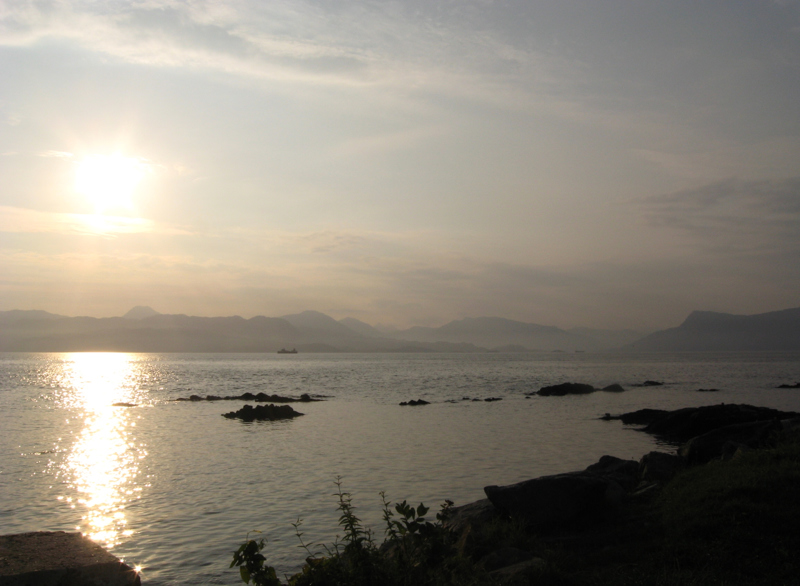
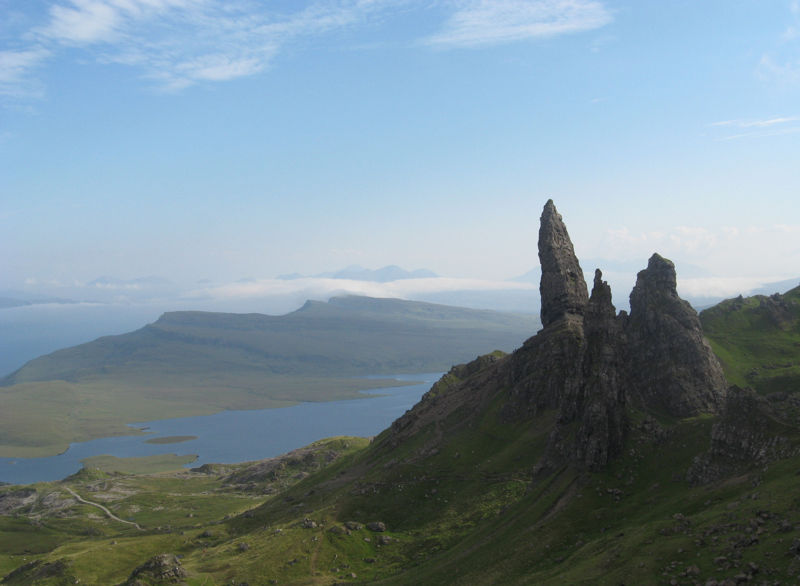
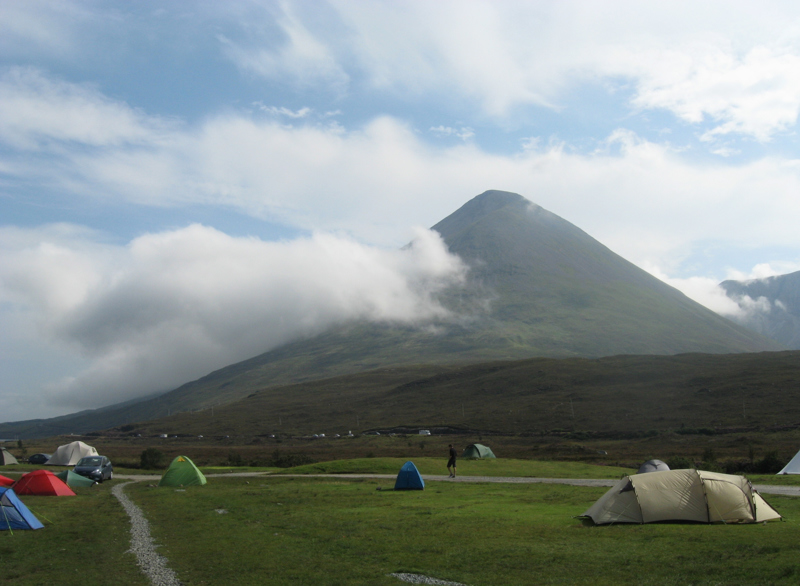
A little further North again and we pulled over in the middle of the mountains, stepping out of the car into peace and silence. Mountains, mist, sheep and utter calm. It was perfect. We found another castle ruin, and a monument to the MacDonald clan, from around the 1800’s. We photographed Duntulm Castle, once the seat of the MacDonald clan chiefs, and carried on down the West coast to see the Flora MacDonald monument. Flora MacDonald was the woman who assisted Prince Charlie in his escape from Scotland, after his disastrous attempt to restore his father to the British throne. We followed the signs, and although we found a lovely museum about local island life, we couldn’t see the monument. We thought we saw something through the mist just beyond the museum, and drove up closer, finding ourselves instead at a cemetery on the cliff edge. It was getting dark, and between the mist and the silence, the atmosphere was spooky and dramatic.
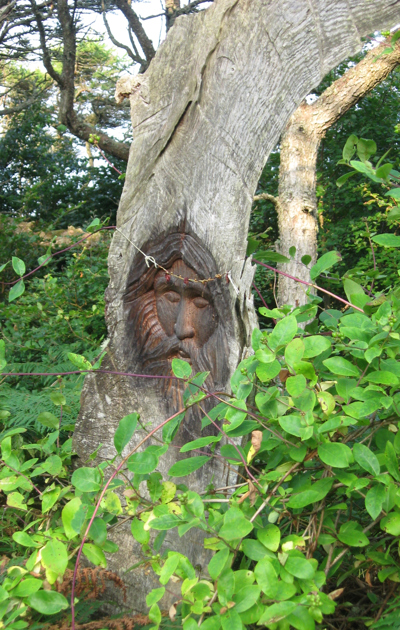
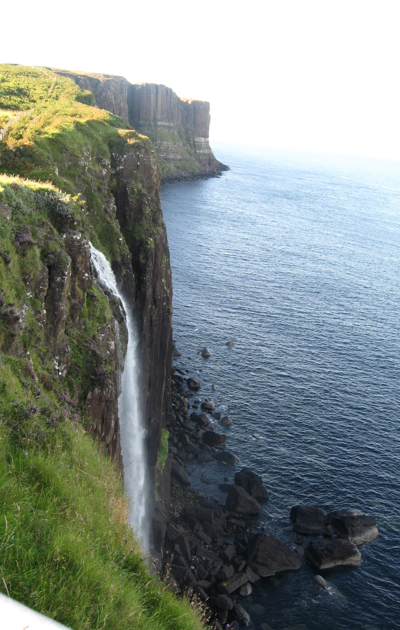
The sun was setting over Sligachan on our way home. We stopped to photograph it, poking above the clouds, over large open meadows and fields. Sheep baa’ed, and the sky glowed like a watercolour painting. After an early night in the tent, I awoke at 3:30am. There is nothing so eerily quiet as a campsite in the dark mountain mist, with the only sound that of snoring from various nearby tents.
The morning came and we finally slept a little longer. Waiting the longest hour in history for the laundry load to finish, we finally set off to Plockton, a small harbour village, North East of Skye. The streets are lined with pretty coloured cottages, flowers and gardens set overlooking the water. During the low tide you can walk to the island in the centre of the harbour, but we didn’t have time for that. Instead, we visited a small, local craft fair, where Melanie found some food and I collected business cards from some talented vendors. On the way back I found a print by a local artist and fell in love, returning to the car with my very first Scottish souvenir: a painting of Plockton harbour. I was completely inspired by both the scenery and the artistic talent of Plockton, and am now even more determined to return to painting when I get back home.
Just South of Plockton is Kylerhea, where we went for a short hike. The road was long and winding, surrounded by rolling green hills,
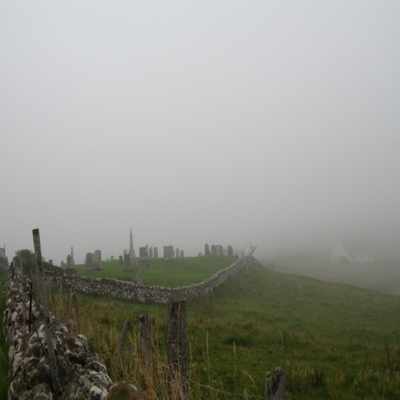

scattered with heather and white stones. The camera chose to die that day, but photos couldn’t really do it justice anyway. In Kylerhea were two hides, set up with telescopes and binoculars. From here we were able to see seals and otters, although we were a little early in the day for the white tipped eagles. Apparently these were hunted to extinction by the Victorians, and reintroduced much later from Norway. The island is now home to twenty-six pairs of the eagle, one of which the local ranger thinks I may have seen from Old Man Storr. The otters were bigger than I expected. From my limited information, I had always assumed they moved as pairs, but was told they’re more solo swimmers.
From here we moved South West to Ord, in search of another castle. The roads were steep and windy, full of blind summits and corners. We stopped for a herd of cattle who decided it was a good time and place to cross. Or, rather, meander slowly along the road while we crawled helplessly behind them. The roads only allow for single file traffic. There are small places to pull over, allowing cars to pass in the opposite direction. With Melanie’s driving style, we frequently came to an abrupt halt, sometimes reversing back into the passing place. I spent a lot of time gasping and braking the empty foot-well. Melanie was patient, and spent a lot of time giggling at my nerves.
We’d all but given up on finding the castle, when we stopped to photograph some unusual trees. I took a few pictures of the

coast, and when I checked them, I saw the outline of some old walls on the far point. The castle had little left other than some lower foundation stones.
We followed the road, not quite lost, but not completely sure of the route. We found ourselves in Tarskavaig, where the community hall had been transformed into a pop up café. There we were, on a mountain in what felt like the middle of nowhere, drinking tea to a warm local welcome. One of the men at the café turned out to be a television producer, who has done frequent work at the Sydney Opera house. To complete the strangeness of our meeting, he was also fluent in German, to Melanie’s surprise.
Warmed by the tea, we moved on in the rain to Elgol, with Melanie teaching me German phrases along the way. I’m not a natural learner, and she got some good laughs out of my attempts to pronounce things. What made her laugh more, was one of the sheep we passed. Instead of the standard patch of spray paint, this poor sheep had a penis sprayed all along his side. I was horrified, but Melanie was still giggling ten minutes down the road.
In the visitor guide, Elgol looks like a perfect harbour town. Arriving in the rain, we could barely see anything through the mist. It did have its own form of beauty, with the mountains silhouetted in the distance. The

route home saw so many crofter cottages, in stone and white render, with nowhere to stop and truly admire them. We found a church ruin with some Commonwealth war graves, where the sheep ran among the gravestones and the dead lay lonely. We spent most of the return journey avoiding sheep and cattle, who are oblivious to cars, lights and pretty much anything except the next best patch of grass.
We arrived back at the Sligachan Hotel, where I continued my attempts at learning German, and I teamed up with Tasmanian Josh, to warn an Englishman against the danger of drop-bears. An Australian accent is so obvious to me when I’m away from it, I could pick his from a mile away, and it was nice to share an inside joke after a long day of gripping the handle on the passenger side of the car.
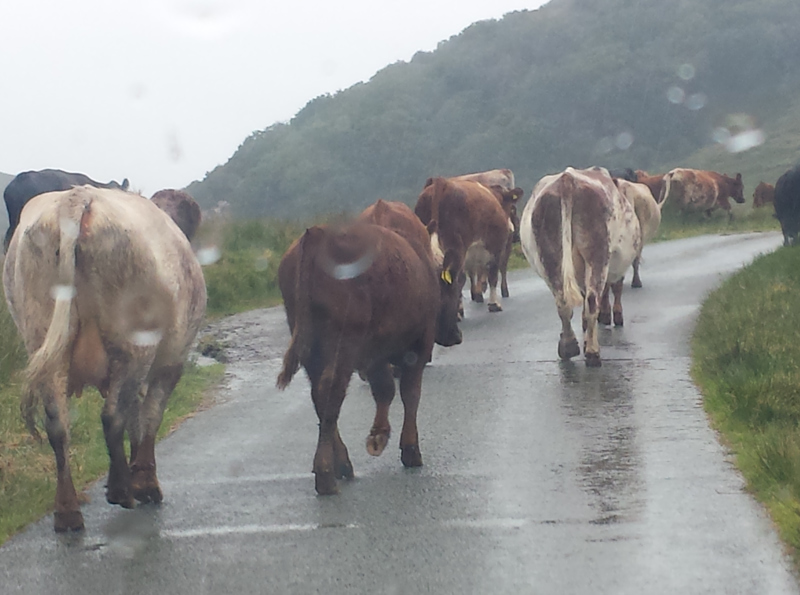
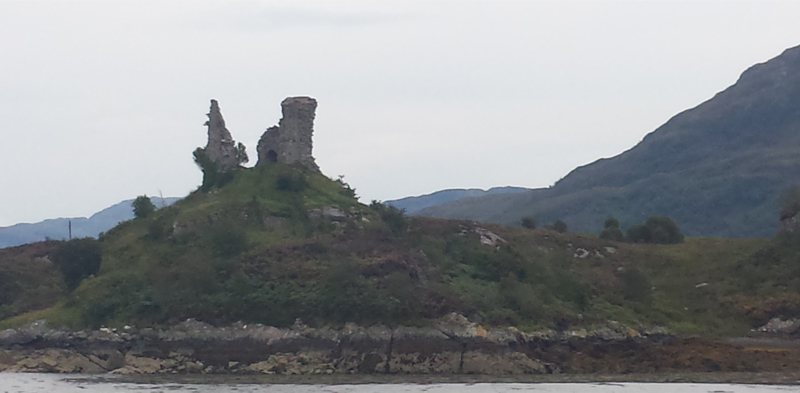
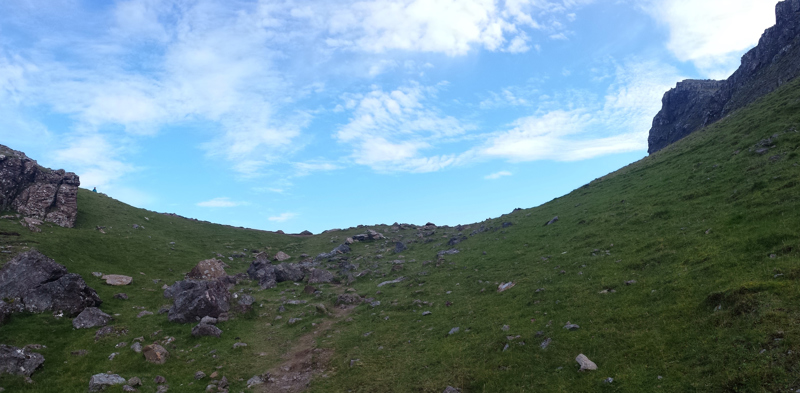

1.
The First Step
2.
The 24 hour jump
3.
12 & 13th July
4.
15th - 17th July
5.
19th & 20th July
6.
21st & 22nd July
7.
23rd - 25th July
8.
27th July
9.
29th & 30th July
10.
July 31st - August 3rd
11.
4th & 5th August
12.
6th & 7th August
13.
9th & 10th August
14.
11th - 13th August
15.
14th & 15th August
16.
16th & 17th August
17.
18th & 19th August
18.
20th & 21st August
19.
22nd & 23rd August
20.
24th & 25th August
21.
26th & 27th August
22.
28th & 29th August
23.
30th August - 21st September
24.
Part II
25.
26th - 30th September
26.
1st - 6th October
27.
7th - 12th October
28.
14th - 16th October
29.
17th & 18th October
30.
19th - 20th October
31.
21st - 24th October
32.
25th - 27th October
33.
29th - 31st October
34.
1st - 10th November
35.
11th - 16th November
36.
Homecoming
Share your travel adventures like this!
Create your own travel blog in one step
Share with friends and family to follow your journey
Easy set up, no technical knowledge needed and unlimited storage!